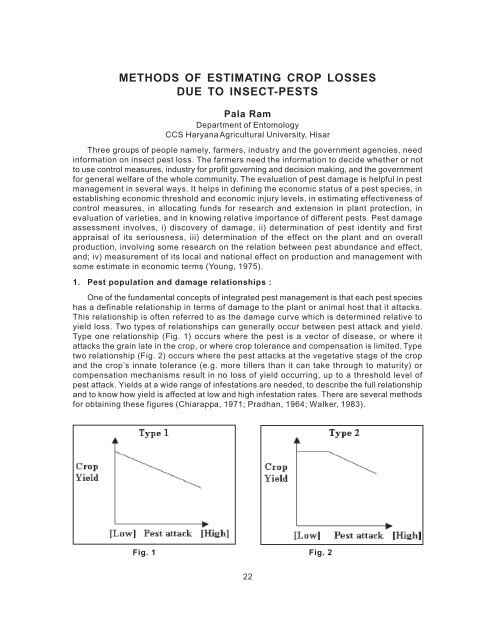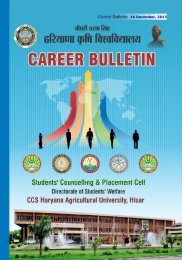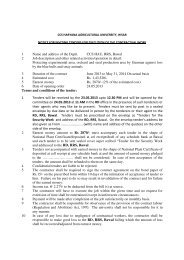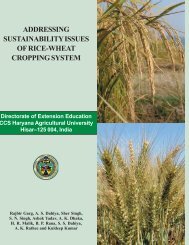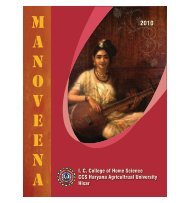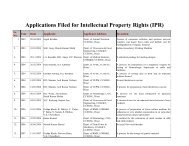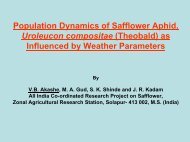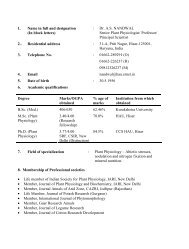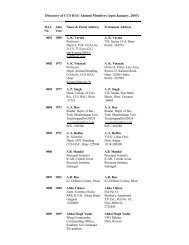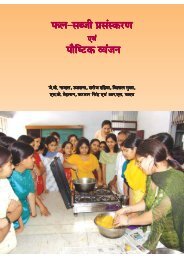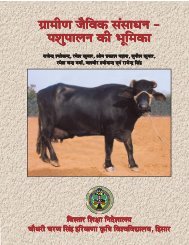Foreword - CCS HAU, Hisar
Foreword - CCS HAU, Hisar
Foreword - CCS HAU, Hisar
Create successful ePaper yourself
Turn your PDF publications into a flip-book with our unique Google optimized e-Paper software.
METHODS OF ESTIMATING CROP LOSSES<br />
DUE TO INSECT-PESTS<br />
Pala Ram<br />
Department of Entomology<br />
<strong>CCS</strong> Haryana Agricultural University, <strong>Hisar</strong><br />
Three groups of people namely, farmers, industry and the government agencies, need<br />
information on insect pest loss. The farmers need the information to decide whether or not<br />
to use control measures, industry for profit governing and decision making, and the government<br />
for general welfare of the whole community. The evaluation of pest damage is helpful in pest<br />
management in several ways. It helps in defining the economic status of a pest species, in<br />
establishing economic threshold and economic injury levels, in estimating effectiveness of<br />
control measures, in allocating funds for research and extension in plant protection, in<br />
evaluation of varieties, and in knowing relative importance of different pests. Pest damage<br />
assessment involves, i) discovery of damage, ii) determination of pest identity and first<br />
appraisal of its seriousness, iii) determination of the effect on the plant and on overall<br />
production, involving some research on the relation between pest abundance and effect,<br />
and; iv) measurement of its local and national effect on production and management with<br />
some estimate in economic terms (Young, 1975).<br />
1. Pest population and damage relationships :<br />
One of the fundamental concepts of integrated pest management is that each pest species<br />
has a definable relationship in terms of damage to the plant or animal host that it attacks.<br />
This relationship is often referred to as the damage curve which is determined relative to<br />
yield loss. Two types of relationships can generally occur between pest attack and yield.<br />
Type one relationship (Fig. 1) occurs where the pest is a vector of disease, or where it<br />
attacks the grain late in the crop, or where crop tolerance and compensation is limited. Type<br />
two relationship (Fig. 2) occurs where the pest attacks at the vegetative stage of the crop<br />
and the crop’s innate tolerance (e.g. more tillers than it can take through to maturity) or<br />
compensation mechanisms result in no loss of yield occurring, up to a threshold level of<br />
pest attack. Yields at a wide range of infestations are needed, to describe the full relationship<br />
and to know how yield is affected at low and high infestation rates. There are several methods<br />
for obtaining these figures (Chiarappa, 1971; Pradhan, 1964; Walker, 1983).<br />
Fig. 1 Fig. 2<br />
22


